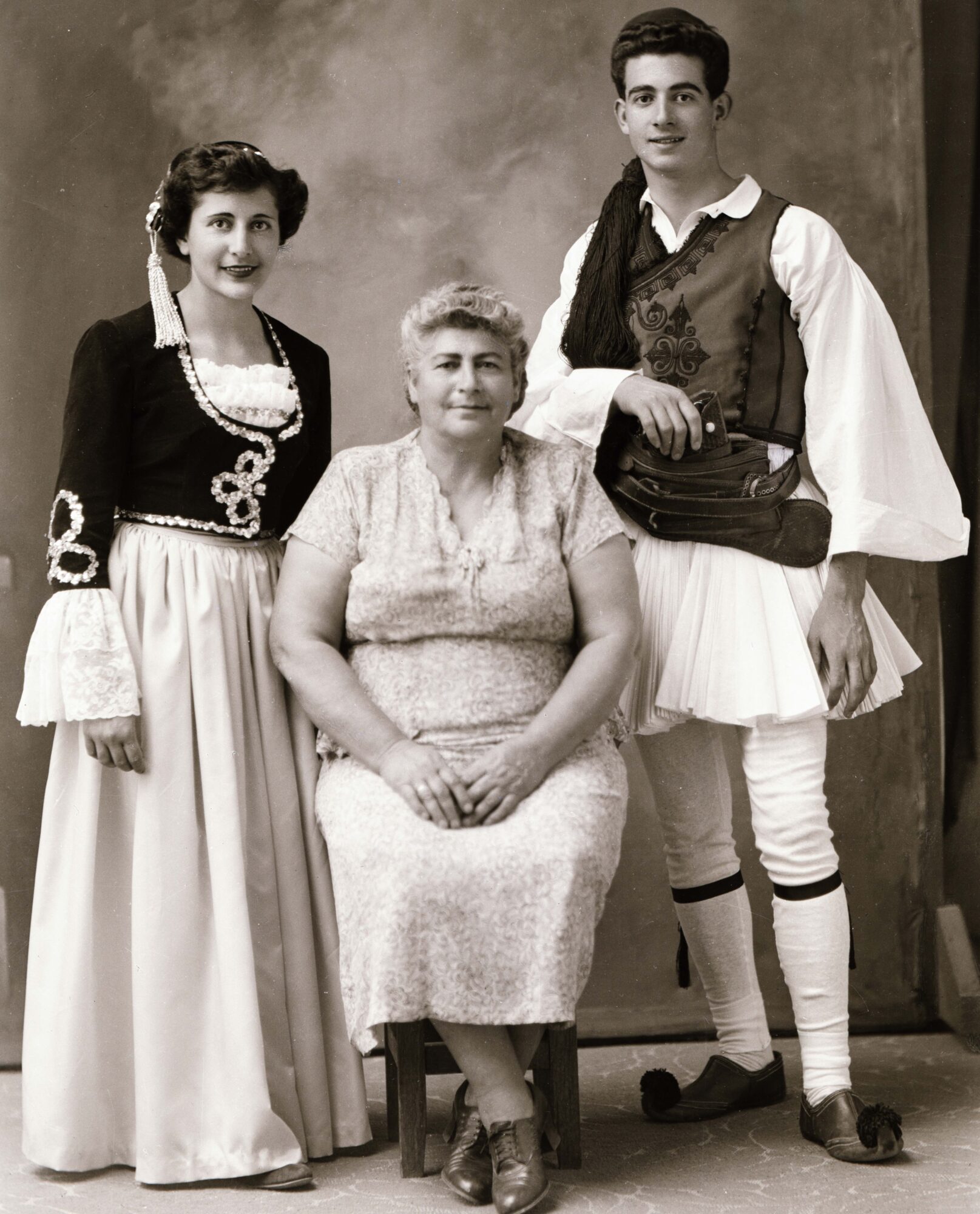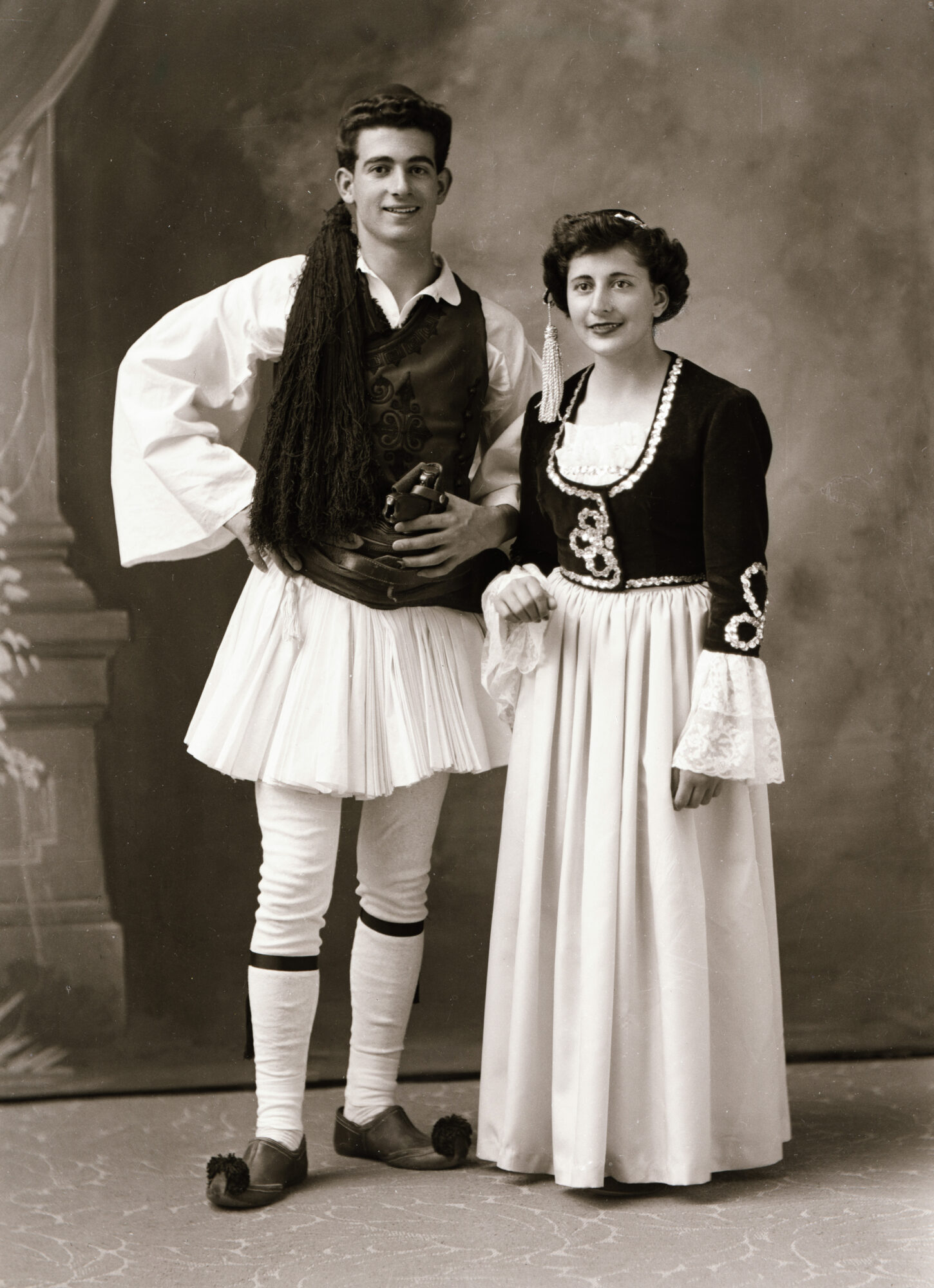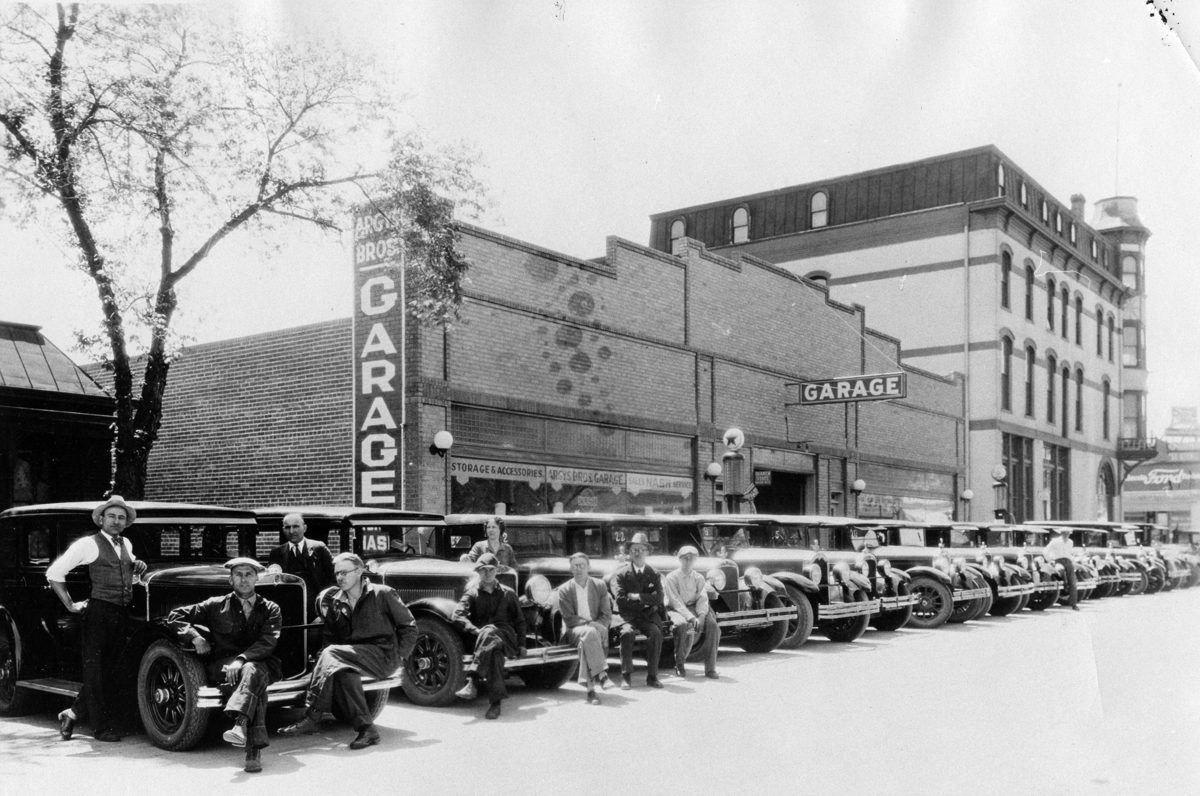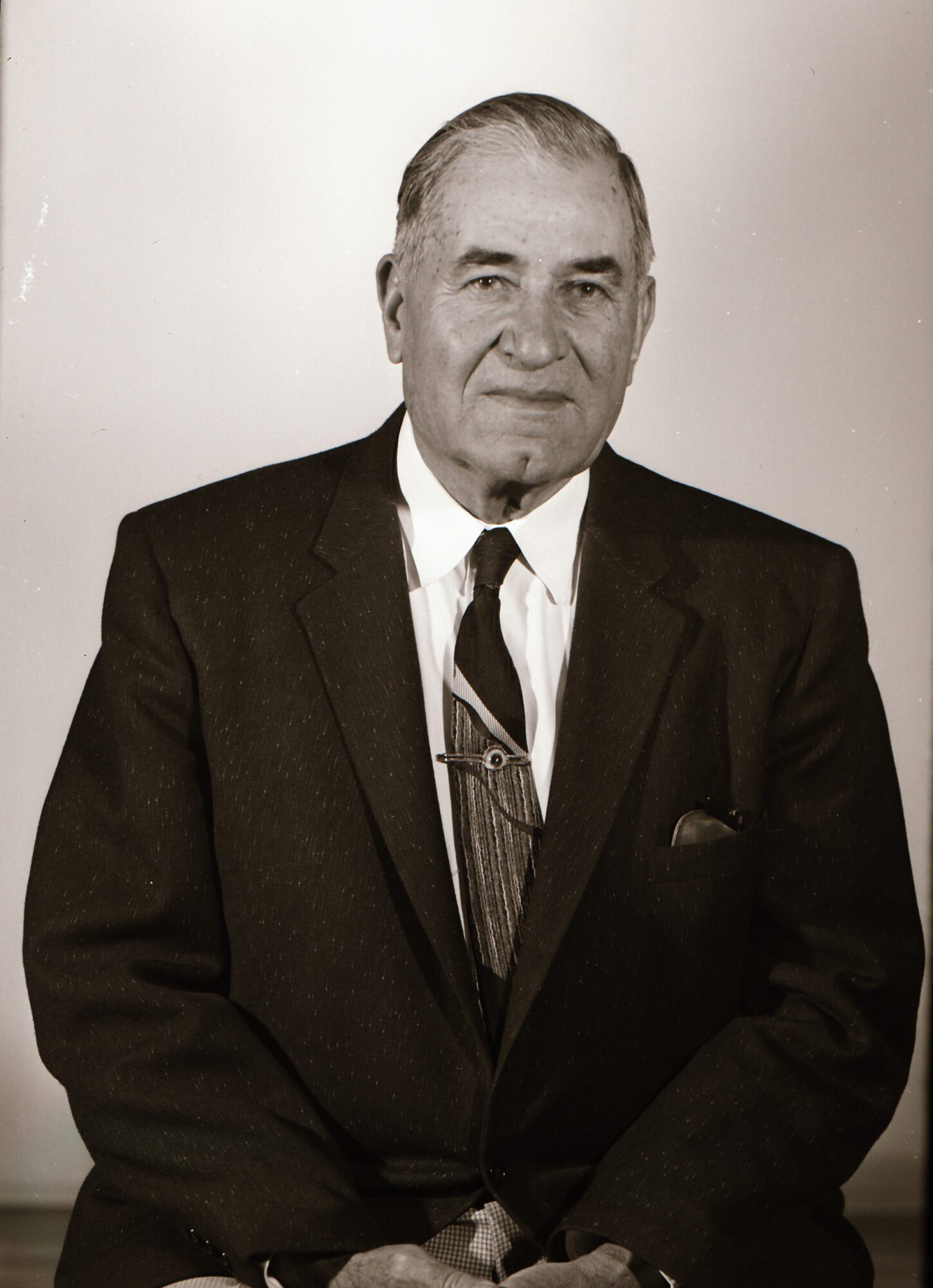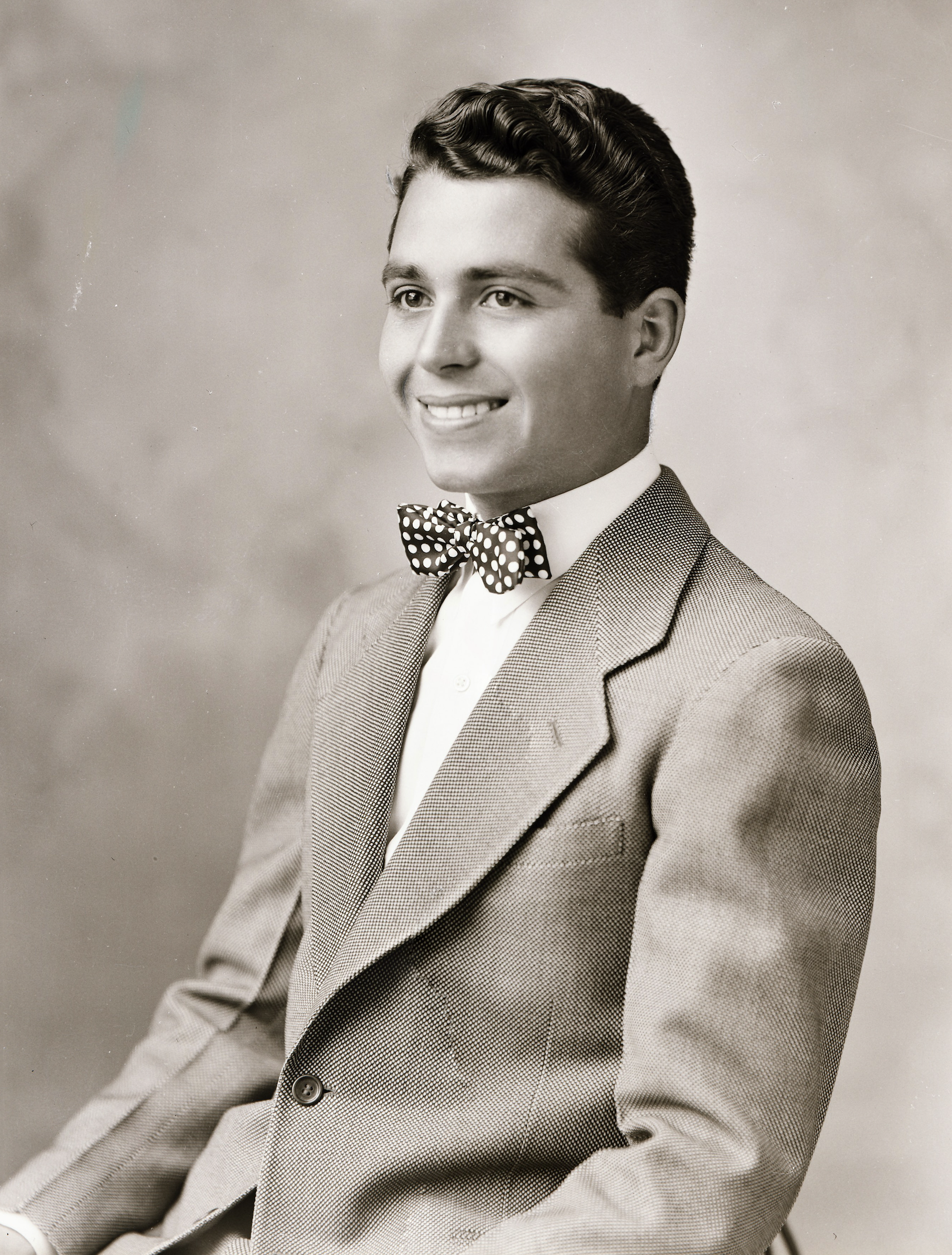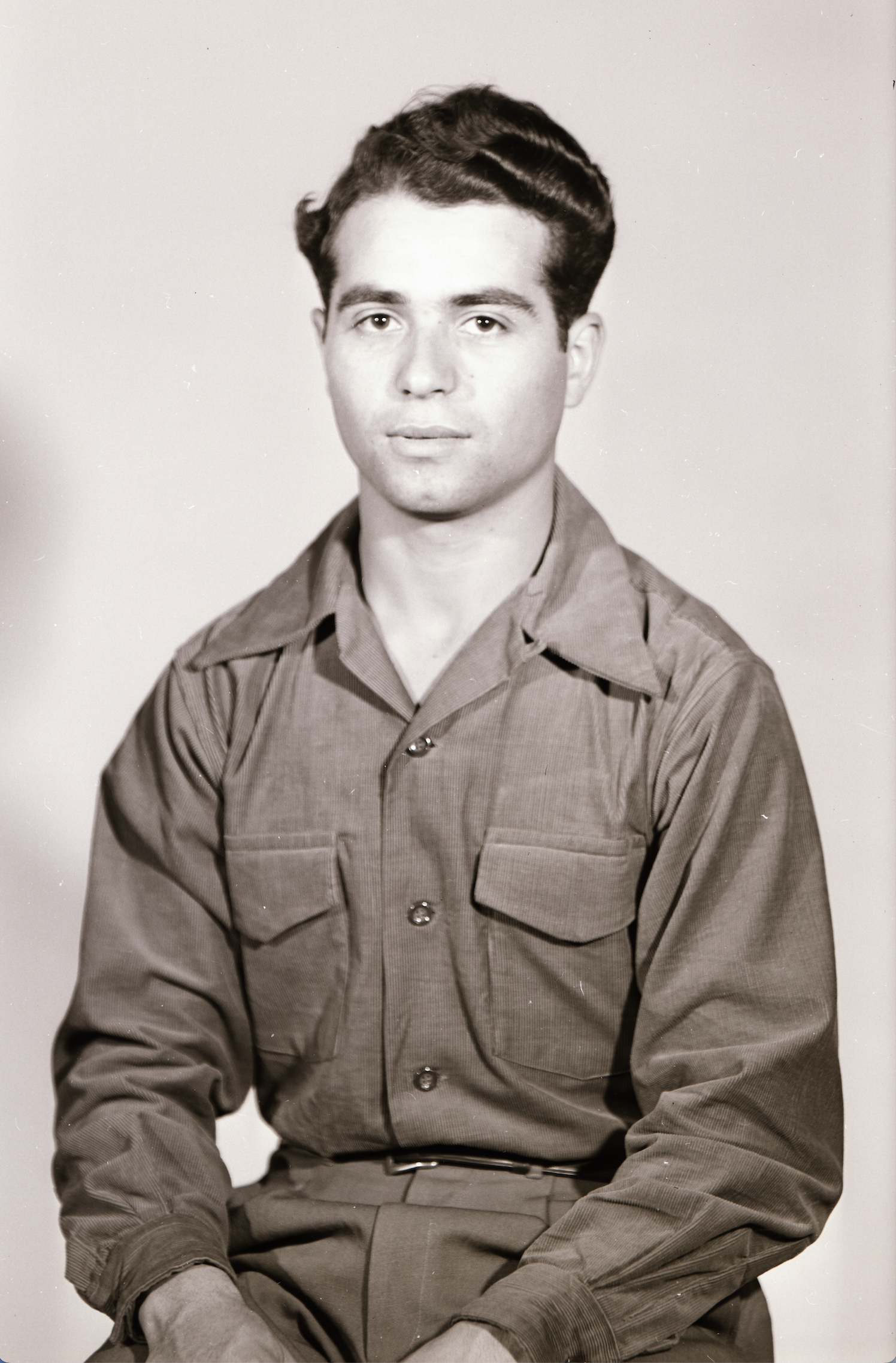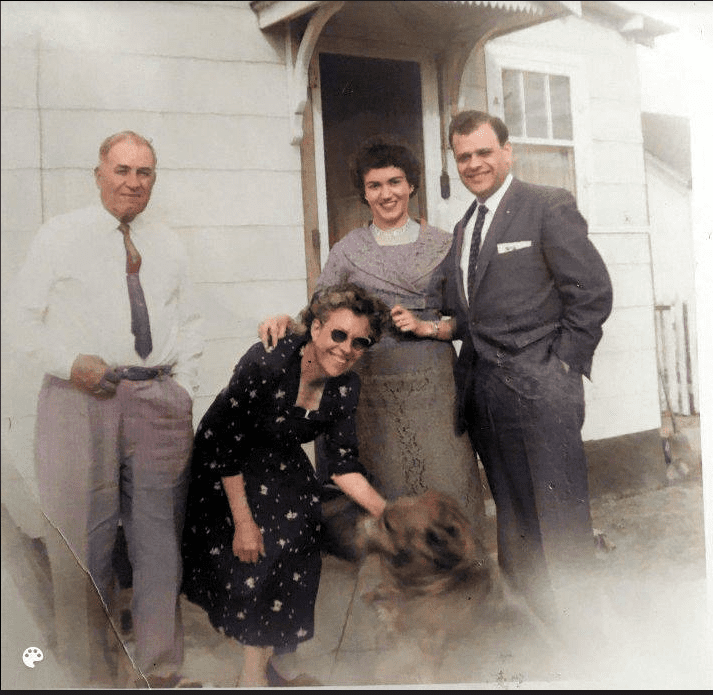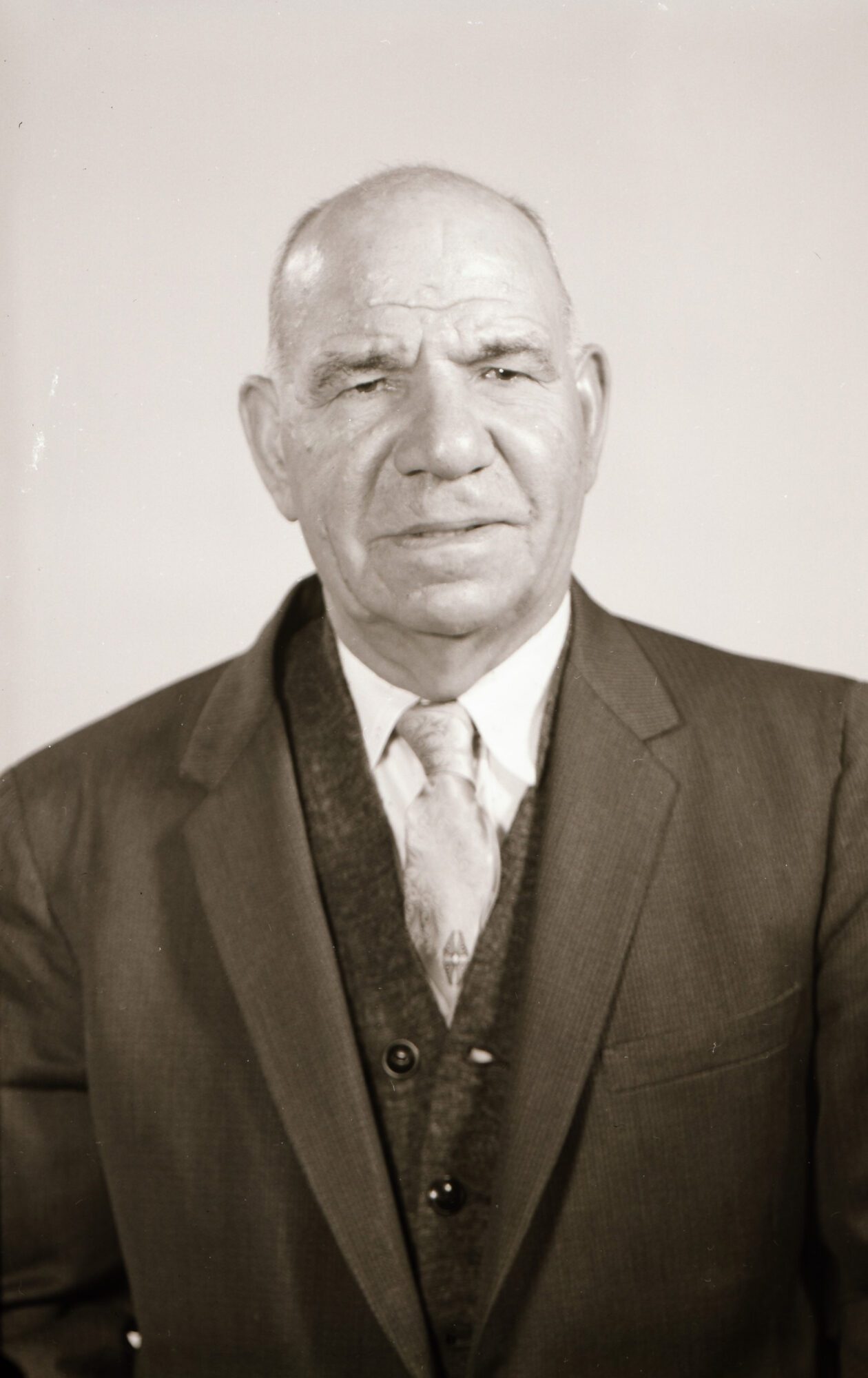Greek Americans in Salida
Thank you to George Leon, George Kallas’s great-nephew, for his contribution to this page.
Unless otherwise noted, all images are from the Salida Museum Collection.
Alice Argys and her mother Katherine Stamatelo Argys, along with Alice’s cousin, Tom Argys.
Katherine was married to Gus Argys.
These portrait images are believed to have been taken in 1953.
20th century Modern Greece was defined by turbulence: a nation caught between a dying modern empire and skirmishes with neighboring countries devolved the country into civil war. In an effort to escape the chaos, an estimated 1/6 of the Greek population emigrated to the United States during the late 19th/early 20th centuries. Some landed in Salida, Colorado.
In 1905, Dick Argys (orig: Argyropoulos) was one of the first to arrive and his brothers Gus and Theodore soon followed. Dick’s first job was heaving coal at the Denver & Rio Grande railyards. After a few years, he and his brothers joined up with fellow Greek transplant Spilios Costas (orig: Constantopoulos) and together they opened a successful grocery/mercantile at 123 Lower F Street.
The Argys brothers soon found that their real success lay in car sales. Costas had left his share of the grocery business to the Arbys Bros. and they sold used cars as a side venture, later expanding out when they opened a Nash dealership at 215 E. 1st Street. The brothers also owned and operated Speedway Garage at 146 W. 1st Street.
This Greek float features a replica Parthenon and was the winning entry in the 1953 FIBArk parade. The design was inspired by Ted Argys, Jr., owner of Ted’s Auto Sales. Starting at left are Steve Kalaras of Pueblo (he arrived in America along with Harold Kallas), Mary Ann Makris, Agnes Makris, Alice Argys, Gus Nasious, Steve Makris, and Tom Argys. Steve and Mary Ann’s kids are presumed to be at top of float.
Mr. Steve Kalaras (age 34 in this image), from Pueblo, would come to Salida often. As a former high school teacher in Greece, he came over in July 1951. He would come to Salida to help tutor young students (like Art and Gus Nasious) in various subjects like English. He was instrumental in helping Ted Argys build the float in this image. Steve later moved to Pittsburgh, Pennsylvania, and was the supreme secretary of the Greek American Progressive Association.
Mary Ann Makris is the wife of Steve Makris. Agnes Marie Makris (age 15 in this image), is the sister of Steve, George, and Dannie Makris, and the daughter of Pete and Manuelita Makris. Alice Argys (about 23 in this image) is the daughter of Gus and Katherine Argys, and siblings with Helen, Jennie, Esther, and Louie. She is first cousins with Ted Argys, Jr. Gus Nasious (about 17 in this image) arrived in Salida on March 25, 1951, along with his brother Art. They both attended Salida High School and worked after school picking vegetables. Steve Makris (age 29 in this image) owned Jenny’s Lunch Stand on Rainbow Boulevard. Tom Argys is a cousin of the Argys family and had also recently moved from Greece when this image was taken.
This is the Argys Bros. Nash Dealership at 215 E. First Street.
George Kallas (orig: Koutsis) arrived at Ellis Island in 1909. His home was in Zakynthos, a western Greek island situated in the Ionian Sea where much of his family had remained. After coming to America, George worked as a laborer for various railroads. When he moved to Salida in 1922, he had been promoted to carman (essentially a mechanic and inspector) with the Denver & Rio Grande Western Railroad.
When George was about 32, he met Bessie May Howe outside the neoclassical Post Office in Denver, Colorado. They immediately fell for each other. George, being a handsome Greek bachelor, would never be approved of by Bessie’s parents, so the pair eloped in a Denver courthouse.
By 1922, George and Bessie had settled down in Salida at 439 W. First Street. They made it their own, George even pressing some seashells into the frontispieces (still visible today) that he had gathered from a visit back home to the old country. And he always kept in touch with his family back in Greece.
In 1924, emigration to America closed when U.S. isolationist policies were enacted, dashing the hopes of any Greeks wanting to flee. Sandwiched between both World Wars, the impact of the Great Depression immobilized Greece, the county already an economic wreck. Poverty was widespread. There were coups and regime change. Greece already in flux tried to stay neutral during World War II but was soon invaded by Nazi Germany. After the war, the long history of schism in Greece came to the brink when the Communist resistance group took up arms against the royalist government forces. Civil War erupted and tens of thousands died.
During this time, Communist guerrillas were conscripting local villagers to fight against the government, and the Koutsis family (George’s brother and his family) were forced to go into hiding. When the United Nations created an Intergovernmental Committee on European Migration, this opened a door to America for Greeks wishing to flee the chaos of their country. George and Bessie Kallas stood ready to help out their family.
In 1951, young Harold Kallas (orig: Panagiotis Koutsis), the nephew of George Kallas and son to Haralambos and Kallopi Koutsis, arrived in the United States. Sponsored (and eventually adopted) by his Uncle George and Aunt Bessie, Harold attended Salida High School during the day and then worked the night shift at Colorado Fuel & Iron up at Monarch. The lion’s share of Harold’s salary was sent over to Greece to support the Koutsis family. The plan was to eventually bring them all over to America.
The 1953 Ionian earthquake that struck the western Greek Isles was the last straw for the Koutsis family. It leveled the family farm and laid waste to the land, pushing them all into tents and reliant upon U.S. Army helicopter food drops. Haralambos Koutsis decided that ‘he was ready to start all over again’ and his brother George made the arrangements to bring the family over. Letters of recommendation were written by local Salida businessmen in support of the family’s relocation, and two years later, the Koutsis family of six arrived in Salida. They lived at 415 E. First Street before moving to Denver. In 1960, George and Bessie helped bring over the last sibling, Bettina.
George and Bessie’s generous acts ensured the family’s survival. Harold Kallas, who currently resides in Denver, has always been extremely grateful to the town of Salida, having been ‘warmly welcomed and helped by every single soul he ever encountered in [our] tiny little paradise.’
In all, George and Bessie Kallas sponsored/assisted nephew Harold Kallas, brother Haralambos Koutsis & his family, sister Bettina, and nephew Andreas Leontaritis (George Leon’s father) in coming to America.
In 1955, Colorado Fuel & Iron company magazine editor Francois Genty wrote up a piece about the Haralambos Koutsis family’s arrival in the United States. A Happy Ending in Salida – Reunited with CF&I employee, Greek family forgets about earthquake, hunger, and Communist guerillas is dated May 6, 1955.
Colorado Fuel & Iron employees at Paul Bartolo’s retirement party. Harold Kallas is pictured in front row seated, third from right.
Harold stayed in Salida from 1951 to about 1957 when he moved to Denver, Colorado.
Many other Greeks relocated and settled in Salida, among them the Mehos, Makris, Nasious, Trefone, Theotokratos, and Anton families. The following images of some members of the Nasious family were found in the Salida Museum collection of negatives.

